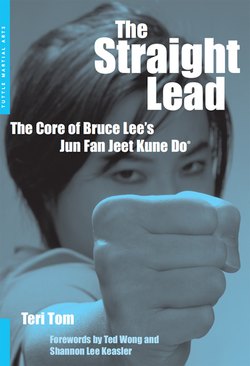Читать книгу Straight Lead - Teri Tom - Страница 11
На сайте Литреса книга снята с продажи.
ОглавлениеC H A P T E R O N E
A B R I E F H I S T O R Y O F
S T R A I G H T P U N C H I N G
E verything comes from something, and the straight lead is no exception. In 1964, Bruce Lee wrote, “The art of straight hitting (punching in a straight and direct line) is the foundation of scientific skill. It is the end result of thousands of years of careful analysis and thought.”1 Indeed, the straight punch is not something that “just happens.” Its origins can be traced to the pre-Olympic era (1500 to 1000 B. C.).
Judging from artwork and pictures, it is believed that blows were originally delivered by swinging and hooking. This is a primitive fighting method and is actually observed in bears and cats—hence, Jim Driscoll’s reference to swinging, uneducated fighters as “Bear-Cats.”2 Images from Minoan and Greek vases, friezes, and statues from the pre-Olympic era provide evidence that the Greeks were starting to utilize the left, or lead, hand. The position of the lead hand in these pictures suggests the development of straight punching.
The caestus, the original boxing glove, provides further evidence of straight punching. The caestus was really nothing more than a leather hand wrap, which covered almost the same areas that its modern-day cotton descendant does. In particular, the caestus provided protection over all four fingers, between the second joint and knuckle, the hitting surface of straight punches.3
Hand protection for straight hitters was later reinforced during the Olympic period with the introduction of the “hard glove,” a thick leather glove that, again, covered the four fingers between the second joint and knuckle, the surface of all straight hitting. Even though fighters of this era were still swinging, the hard glove’s hitting surface is evidence that those swings were now shortening into more scientific hooks.
Along with the prominence of straight hitting came the boxing stance that very much resembles the modern boxing stance. In Greek artwork depicting boxing scenes, the left (lead) foot is clearly in front of the right foot, with the left hand held straight out. Even then, the left hand was used as a defensive tool to fend off opponents with pestering jabs, from a stance that guarded the centerline. The Greeks probably used the lead hand as a gauge for judging distance as well.4
Whatever progress the Greeks had made, however, was soon lost when the Romans introduced the lead-loaded caestus, which was quite effective at smashing skulls, ending matches swiftly and spectacularly, regardless of the contestants’ skill. Following in the vein of the loaded caestus was the myrmex, a pick attached to the caestus, intended to pierce body parts—nasty, nasty business. Both weapons may be blamed for the loss of fistic art and science. In a situation not unlike the one we face today, the desire for bloody entertainment had brought fighting to its lowest common denominator.
It would take 1200 years and the development of fencing for boxing to reemerge. As John V. Grombach wrote in The Saga of the Fist:
When boxing did come back in England, it was introduced by fencing-masters. As a result, the boxing stance was made to approximate the fencing stance and to good effect. By that time, fencing had advanced to the point where the small sword or thrusting weapon was preferred to the broadsword or sabre. The use of the straight thrust or lunge against any side sweep or slash had been developed. The principles of advancing, retreating, much of our modern boxing footwork, and our straight punching came from fencing.5
The rapier was the weapon that established the supremacy of straight thrusting over slashing.6 First, the rapier, with its pinpoint accuracy, was much more effective than the broadsword in finding those vulnerable little areas between plates of armor. But the main advantage of the rapier over the broadsword is that the shortest distance between two points is a straight line. Applied to fencing or boxing, a straight thrust or straight lead will reach its target before a swing, hook, or sweeping slash. Straight motions in fighting are, therefore, not only offensive maneuvers, but defensive in nature as well.
This is what we call the “stop-hit” in fencing. As Nadi noted, “The great advantage of the stop-thrust over the counterattack-proper is that it can be performed against fast, correctly executed attacks—stopping them in their tracks.”7 The stop-hit, executed mainly with the straight lead, is such an important principle of Jeet Kune Do that this is where Bruce Lee’s art derives its very name. In Cantonese, jeet means “intercepting” or “stopping,” kune means “fist,” and do is “the way.” Translated in English, Jeet Kune Do is quite literally “The Way of the Intercepting Fist.”
N O T E S
1 Bruce Lee, ed. John Little, The Tao of Gung Fu (Boston: Tuttle Publishing, 1997), p. 59.
2 Jim Driscoll, The Straight Left and How To Cultivate It (London: Athletic Publications, LTD.), pp. 16–19.
3 Harry Carpenter, Boxing: An Illustrated History (New York: Crescent Books, 1982) pp. 8–10.
4 John V. Grombach, The Saga of the Fist (New Your: A.S. Barnes and Company, 1977), pp. 191–194.
5 Ibid., p. 200.
6 Richard Cohen, By the Sword: A History of Gladiators, Musketeers, Samurai, Swashbucklers, and Olympic Champions (New York: Random House, 2002), pp. 28–29.
7 Aldo Nadi, On Fencing, (Bangor, ME: Laureate Press, 1994), p. 185.
